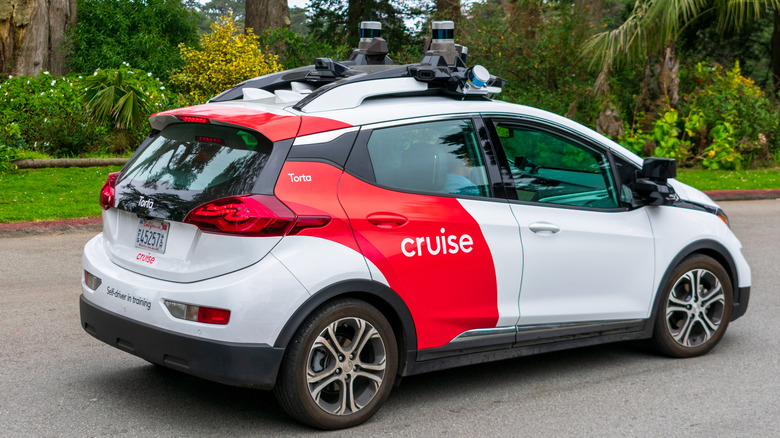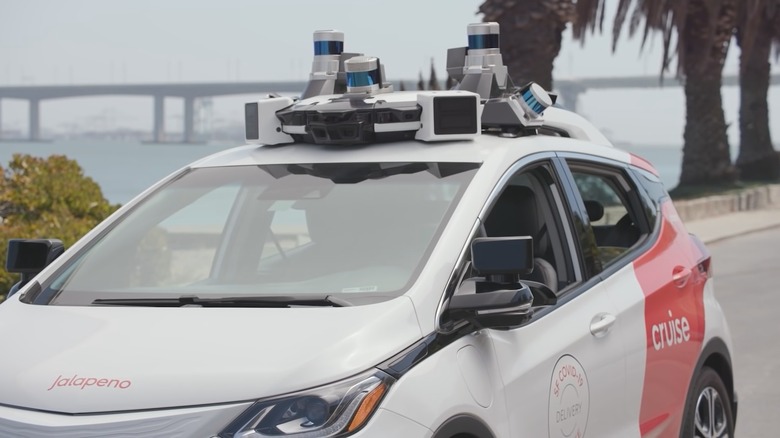The Internet Can't Believe Cops Pulled Over A Driverless Car
Law enforcement authorities in San Francisco pulled over a self-driving Cruise hatchback earlier this month for moving around with its headlights off. The video of the incident, which was first shared on Instagram, shows a police vehicle and one police officer approaching an autonomous Cruise car on a city street at night. The officer can be seen walking to the left of the car — the side where a police officer in North America is generally safe in assuming they'll find a human driver.
The officer can be seen visibly confused, speaking about the car's distinct lack of people inside. The car is shown driving a few meters ahead and stopping in an open parking space near a traffic light. Police pursue, then attempt to get in touch with Cruise's human representative team to sort the issue. The situation, however, has drawn some interesting responses and opinions on social media, starting with the point at which the vehicle appears to momentarily evade the law.
The SFPD versus an automated car
It would appear that a common comment from first-time viewers of the video is that it appears the Cruise vehicle attempted to evade police in a daring moment of foolishness. Cruise responded to one such comment, tweeting that its autonomous vehicle stopped at "the nearest safe location, as intended." In a statement shared with the BBC, a Cruise representative suggested that the reason the car was pulled over in the first place — the headlight malfunction — was the result of human error.
The company, which began testing its self-driving robot-taxi service in San Francisco in February this year, says its cars are equipped with mics so that they can listen and respond to sirens. The company also has an escalation team with a dedicated helpline number that attends to queries from law enforcement officials. And if needed, the team can accomplish tasks like remotely unlocking the doors of an autonomous vehicle and bringing it to a halt at a safe spot. This is not the first time an automated car has been pulled over by police for breaking the law, and it won't likely be the last.
Policing automated cars is a brand new issue
Cruise also released a video detailing the safety systems in place and how first responders should interact with its fleet of self-driving cars. However, there are bigger questions that need to be answered from a policy-making perspective when it comes to handling self-driving cars that have become involved in situations where laws have been broken or will likely be broken in the future.
At the moment, there is no nationwide policing protocol for de-escalation scenarios involving self-driving cars in the United States. Self-driving cars that maintain a comprehensive audio-visual record of all interactions and provide records to law enforcement allow can help speed up police action, and police should be made aware that autonomous cars are legally operating in their district. Autonomous cars that drive city streets in 2022 generally have the ability to recognize street signs, lights, and hazards of all sorts, but mistakes happen. It's difficult for even today's most advanced artificial intelligence to predict how human drivers will act at any given moment.
As automation of driving duties is enacted on city streets across the United States, so too are questions raised on whether automated police interaction with autonomous cars should also be a topic of concern. Elon Musk's question on the outlawing of human-driven vehicles also remains a topic worth exploring.

